Processes for producing beta-lactone with heterogenous catalysts
Sookraj
U.S. patent number 10,590,099 [Application Number 15/674,453] was granted by the patent office on 2020-03-17 for processes for producing beta-lactone with heterogenous catalysts. This patent grant is currently assigned to Novomer, Inc.. The grantee listed for this patent is Novomer, Inc.. Invention is credited to Sadesh H. Sookraj.












View All Diagrams
| United States Patent | 10,590,099 |
| Sookraj | March 17, 2020 |
Processes for producing beta-lactone with heterogenous catalysts
Abstract
The present invention is directed to processes from producing beta-lactone and beta-lactone derivatives using heterogenous catalysts. In preferred embodiments of the present invention, the processes comprise the steps: passing a feed stream comprising an epoxide reagent and a carbon monoxide reagent to a reaction zone; contacting the epoxide reagent and the carbon monoxide reagent with a heterogenous catalyst to produce a beta-lactone product in the reaction zone; and removing the beta-lactone product from the reaction zone. In preferred embodiments, the heterogenous catalyst comprises a solid support containing a cationic Lewis acid functional group and a metal carbonyl compound comprising at least one of anionic metal carbonyl compound or a neutral metal carbonyl compound. In certain preferred embodiments, the epoxide reagent and carbon monoxide reagent have a biobased content.
| Inventors: | Sookraj; Sadesh H. (Cambridge, MA) | ||||||||||
|---|---|---|---|---|---|---|---|---|---|---|---|
| Applicant: |
|
||||||||||
| Assignee: | Novomer, Inc. (Boston,
MA) |
||||||||||
| Family ID: | 69778949 | ||||||||||
| Appl. No.: | 15/674,453 | ||||||||||
| Filed: | August 10, 2017 |
| Current U.S. Class: | 1/1 |
| Current CPC Class: | B01J 37/0236 (20130101); C07D 407/06 (20130101); C07D 305/14 (20130101); C07D 305/12 (20130101); B01J 31/20 (20130101); B01J 37/04 (20130101); B01J 37/0201 (20130101); B01J 37/08 (20130101); B01J 31/1815 (20130101); C07D 407/12 (20130101); B01J 2531/0252 (20130101); B01J 2531/025 (20130101); B01J 2231/32 (20130101); Y02P 20/127 (20151101); B01J 31/1805 (20130101); B01J 2531/31 (20130101); B01J 2531/62 (20130101); B01J 31/2243 (20130101); B01J 2531/0213 (20130101) |
| Current International Class: | C07D 305/12 (20060101); B01J 37/08 (20060101); C07D 305/14 (20060101); C07D 407/12 (20060101); C07D 407/06 (20060101); B01J 37/02 (20060101); B01J 37/04 (20060101); B01J 31/20 (20060101); B01J 31/18 (20060101) |
References Cited [Referenced By]
U.S. Patent Documents
| 3885155 | May 1975 | Anbar |
| 4427884 | January 1984 | Anbar et al. |
| 4973841 | November 1990 | Purser |
| 5256828 | October 1993 | Cuscurida et al. |
| 5310948 | May 1994 | Drent et al. |
| 5359081 | October 1994 | Drent et al. |
| 5438194 | August 1995 | Koudijs et al. |
| 5661299 | August 1997 | Purser |
| 6852865 | February 2005 | Coates et al. |
| 7420064 | September 2008 | Luinstra et al. |
| 8445703 | May 2013 | Valente et al. |
| 8796475 | August 2014 | Allen |
| 9096510 | August 2015 | Porcelli et al. |
| 9156803 | October 2015 | Allen et al. |
| 9206144 | December 2015 | Allen et al. |
| 9327280 | May 2016 | Lee et al. |
| 9403788 | August 2016 | Lee et al. |
| 9493391 | November 2016 | Allen et al. |
| 9738784 | August 2017 | Allen et al. |
| 9914689 | March 2018 | Porcelli et al. |
| 10065914 | September 2018 | Ruhl et al. |
| 10099988 | October 2018 | Farmer et al. |
| 10099989 | October 2018 | Sookraj |
| 10144802 | December 2018 | Sookraj |
| 10221150 | March 2019 | Farmer et al. |
| 10221278 | March 2019 | Lee et al. |
| 10245559 | April 2019 | Lapointe et al. |
| 2005/0014977 | January 2005 | Drent et al. |
| 2007/0161806 | July 2007 | Preishuber-Pflugl et al. |
| 2012/0123137 | May 2012 | Allen et al. |
| 2013/0165670 | June 2013 | Allen et al. |
| 2013/0209775 | August 2013 | Allen et al. |
| 2013/0281715 | October 2013 | Allen et al. |
| 2014/0275575 | September 2014 | Allen et al. |
| 2014/0296522 | October 2014 | Lee et al. |
| 2014/0309399 | October 2014 | Porcelli et al. |
| 2015/0005513 | January 2015 | Lee et al. |
| 2015/0141693 | May 2015 | Allen et al. |
| 2015/0299083 | October 2015 | Porcelli et al. |
| 2015/0368394 | December 2015 | Allen |
| 2016/0016876 | January 2016 | Mahoney |
| 2016/0102040 | April 2016 | Allen et al. |
| 2016/0102068 | April 2016 | Allen et al. |
| 2016/0288057 | October 2016 | Lapointe et al. |
| 2017/0029352 | February 2017 | Sookraj et al. |
| 2017/0073463 | March 2017 | Lee et al. |
| 2017/0080409 | March 2017 | Farmer et al. |
| 2017/0107103 | April 2017 | Sookraj et al. |
| 2017/0145126 | May 2017 | Mahoney |
| 2017/0225157 | August 2017 | Lee |
| 2017/0247309 | August 2017 | Porcelli et al. |
| 2017/0267618 | September 2017 | Sookraj et al. |
| 2018/0016219 | January 2018 | Farmer et al. |
| 2018/0022677 | January 2018 | Sookraj |
| 2018/0029005 | February 2018 | Sookraj |
| 2018/0030014 | February 2018 | Sookraj et al. |
| 2018/0030015 | February 2018 | Farmer et al. |
| 2018/0030201 | February 2018 | Farmer et al. |
| 2018/0057619 | March 2018 | Sookraj |
| 2018/0094100 | April 2018 | Farmer et al. |
| 2018/0153746 | June 2018 | Sookraj |
| 2018/0155490 | June 2018 | Sookraj |
| 2018/0155491 | June 2018 | Sookraj |
| 2018/0282251 | October 2018 | Sookraj |
| 2018/0305286 | October 2018 | Sookraj |
| 2018/0305289 | October 2018 | Sookraj et al. |
| 2018/0354881 | December 2018 | Farmer et al. |
| 2018/0354882 | December 2018 | Sookraj |
| 2019/0002293 | January 2019 | Sookraj et al. |
| 2019/0002385 | January 2019 | Sookraj et al. |
| 2019/0002400 | January 2019 | Sookraj |
| 2019/0030520 | January 2019 | Lee |
| 2019/0031592 | January 2019 | Sookraj et al. |
| 2019/0047972 | February 2019 | Sookraj |
| 2019/0071538 | March 2019 | Sookraj |
| 2019/0076834 | March 2019 | Sookraj |
| 2019/0076835 | March 2019 | Sookraj |
| 2019/0106532 | April 2019 | Sookraj |
| 2009/155086 | Dec 2009 | WO | |||
| WO 2010/118128 | Oct 2010 | WO | |||
| WO-2010118128 | Oct 2010 | WO | |||
| 2012/030619 | Mar 2012 | WO | |||
| 2012/051219 | Apr 2012 | WO | |||
| 2012/158573 | Nov 2012 | WO | |||
| WO 2013/063191 | May 2013 | WO | |||
| 2013/122905 | Aug 2013 | WO | |||
| 2013/126375 | Aug 2013 | WO | |||
| 2014/004858 | Jan 2014 | WO | |||
| 2014/008232 | Jan 2014 | WO | |||
| 2015/085295 | Jun 2015 | WO | |||
| 2015/138975 | Sep 2015 | WO | |||
| 2015/171372 | Nov 2015 | WO | |||
| 2015/184289 | Dec 2015 | WO | |||
| 2016/015019 | Jan 2016 | WO | |||
| 2016/130947 | Aug 2016 | WO | |||
| 2016/130977 | Aug 2016 | WO | |||
| 2016/130988 | Aug 2016 | WO | |||
| 2016/130993 | Aug 2016 | WO | |||
| 2016/130998 | Aug 2016 | WO | |||
| 2016/131001 | Aug 2016 | WO | |||
| 2016/131003 | Aug 2016 | WO | |||
| 2016/131004 | Aug 2016 | WO | |||
| 2017/023777 | Feb 2017 | WO | |||
| 2017/023820 | Feb 2017 | WO | |||
| 2017/165323 | Sep 2017 | WO | |||
| 2017/165344 | Sep 2017 | WO | |||
| 2017/165345 | Sep 2017 | WO | |||
| 2018/085251 | May 2018 | WO | |||
| 2018/085254 | May 2018 | WO | |||
| 2018/106824 | Jun 2018 | WO | |||
| 2018/107185 | Jun 2018 | WO | |||
| 2018/136638 | Jul 2018 | WO | |||
| 2018/144998 | Aug 2018 | WO | |||
| 2018/170006 | Sep 2018 | WO | |||
| 2018/200466 | Nov 2018 | WO | |||
| 2018/200471 | Nov 2018 | WO | |||
| 2019/006366 | Jan 2019 | WO | |||
| 2019/006377 | Jan 2019 | WO | |||
| 2019/050649 | Mar 2019 | WO | |||
| 2019/051184 | Mar 2019 | WO | |||
| 2019/070981 | Apr 2019 | WO | |||
Other References
|
Kegel, W., et al. "The Immobilization of a Transfer Hydrogenation Catalyst on Colloidal Particles." ChemCatChem. (2017), vol. 9, pp. 440-450. (Year: 2017). cited by examiner . Church, et al., Carbonylation of Heterocycles by Homogeneous Catalysts, Chem. Commun., Jan. 19, 2007 (5 pages), Royal Society of Chemistry 2018. cited by applicant . Inoue, et al., "Organometallic-Catalyzed Polymerization of Propiolactone" Makromol. (1961), Chem., 48: 229-233 https://doi.org/10.1002/macp.1961.020480121. cited by applicant. |
Primary Examiner: Kosar; Andrew D
Assistant Examiner: Kenyon; John S
Attorney, Agent or Firm: Young Basile Hanlon & MacFarlane, P.C.
Claims
What is claimed is:
1. A process for producing a beta-lactone product from a carbon monoxide reagent and an epoxide reagent, the process comprising: a. passing the epoxide reagent to a reaction zone; b. passing the carbon monoxide reagent to the reaction zone; c. contacting the epoxide reagent and the carbon monoxide reagent with a heterogenous catalyst at reaction conditions in the reaction zone to produce the beta-lactone product; and d. removing the beta-lactone product from the reaction zone; wherein at least one of the epoxide reagent and the carbon monoxide reagent is derived from renewable sources; and wherein the heterogenous catalyst comprises: a solid support comprising at least one zeolite having a faujasite structure, a mordenite structure, a ZSM-5 (MFI) structure, a hexagonal pore arrangement of MCM-41, a cubic pore arrangement of MCM-48, or a lamellar pore arrangement of MCM-50, a cationic Lewis acid functional group, and a metal carbonyl compound comprising at least one anionic metal carbonyl compound or neutral metal carbonyl compound.
2. The process of claim 1, wherein the epoxide reagent comprises ethylene oxide, propylene oxide, 1,2-epoxyhexane, 1,2-epoxydodecane, 3,4-epoxy-1-butene, 1,2-epoxy-5-hexene, 1,2-epoxy-9-decene, isoprene monoxide, epichlorohydrin, 1,3-butadiene diepoxide, 1,2,7,8-diepoxyoctane, 1,2-epoxycyclopentane, or cyclooctene oxide.
3. The process of claim 1, wherein the metal carbonyl compound is a metal porphyrin compound, a metal salen compound, a metal salophen compound.
4. The process of claim 1, wherein the reaction zone includes at least one of a fixed bed reactor, a moving bed reactor, a fluidized bed reactor, a trickle bed reactor, a catalytic distillation zone, a continuously stirred tank reactor, or a tubular reactor.
5. The process of claim 1, wherein the reaction conditions include a pressure of from atmospheric pressure to 600 psi, at a weight hourly space velocity of 0.25 to 20 hr.sup.-1.
6. The process of claim 1, wherein the concentration of the epoxide reagent in the reaction zone is equal to or up to 10% higher than the stoichiometric value for a carbonylation reaction.
7. The process of claim 1, wherein the reaction zone receives a Lewis base additive selected from the group consisting of a modified THF, 2,6-lutidine, imidazole, 1-methylimidazole 4-dimethylaminopyridine, trihexylamine, and triphenylphosphine.
8. The process of claim 1, wherein the heterogenous catalyst comprises an anionic metal carbonyl species having a general formula of [Q.sub.dM'.sub.e(CO).sub.w].sup.y-, wherein: Q is a ligand, provided that d is not 0, M' is a metal atom, d is an integer between 0 and 8 inclusive, e is an integer between 1 and 6 inclusive, w is the number needed to provide the stable anionic metal carbonyl complex, y is the charge of the anionic metal carbonyl species, and the anionic metal carbonyl species is bound to a solid support comprising silica, alumina, titania, zirconia, carbon black, activated carbon, or zeolite, or any combination thereof.
9. The process of claim 8, wherein the anionic metal carbonyl species comprises at least one of [Co(CO).sub.4].sup.-, [Ti(CO).sub.6].sup.2-, [V(CO).sub.6].sup.-, [Rh(CO).sub.4].sup.-, [Fe(CO).sub.4].sup.2-, [Ru(CO).sub.4].sup.2-, [Os(CO).sub.4].sup.2-, [Cr.sub.2(CO).sub.10].sup.2-, [Fe.sub.2(CO).sub.8].sup.2-, [Tc(CO).sub.5].sup.-, [Re(CO).sub.5].sup.-, and [Mn(CO).sub.5].sup.-.
10. The process of claim 1, wherein the cationic Lewis acid functional group comprises Zn(II), Cu(II), Mn(II), Co(II), Ru(II), Fe(II), Rh(II), Ni(II), Pd(II), Mg(II), Al(III), Cr(III), Fe(III), Co(III), Ti(III) In(III), Ga(III), Mn(III), Ti(IV), or Cr(IV).
11. A process for producing a beta-lactone product from a carbon monoxide reagent and an epoxide reagent, the process comprising: a. passing the epoxide reagent to a reaction zone; b. passing the carbon monoxide reagent to the reaction zone; c. contacting the epoxide reagent and the carbon monoxide reagent with heterogenous catalyst at reaction conditions in the reaction zone to produce the beta-lactone product, wherein the heterogenous catalyst comprises a solid support, a cationic Lewis acid functional group and a metal carbonyl compound comprising at least one anionic metal carbonyl compound or neutral metal carbonyl compound; and d. removing the beta-lactone product from the reaction zone; wherein at least one metal complex is impregnated into a solid support comprising a crystalline structure by mixing the metal complex with the crystalline structure followed by drying and calcination to form the heterogenous catalyst.
12. The process of claim 11, wherein a first metal complex is mixed with the crystalline structure followed by drying and calcining to produce an impregnated solid support and the impregnated solid support is mixed with an additional metal complex followed by an additional drying and calcining to form the heterogenous catalyst.
13. The process of claim 11, wherein the cationic Lewis acid functional group is a cationic metal complex having the general formula [(L.sup.c).sub.vM.sub.b].sup.z+, wherein: L.sup.c is at least one ligand; M is at least one metal atom; v is an integer from 1 to 4 inclusive; b is an integer from 1 to 2 inclusive; and z is an integer greater than 0 that represents the cationic charge on the metal complex.
14. The process of claim 13, wherein L.sup.c is at least one porphyrin ligand, salen ligand, dibenzotetramethyltetraaza[14]annulene (tmtaa) ligand, phthalocyaninate ligand, Trost ligand, tetraphenylporphyrin ligand, or corrole ligand.
15. The process of claim 11, wherein the metal carbonyl compound comprises a phosphine ligand, an amine ligand, a cyclopentadienyl ligand, a heterocyclic ligand, nitrile, or phenol, or any combination thereof.
16. The process of claim 1, wherein the epoxide reagent is ethylene oxide, and the beta-lactone product is beta-propiolactone.
17. The process of claim 11, wherein the epoxide reagent is ethylene oxide, and the beta-lactone product is beta-propiolactone.
18. The process of claim 8, wherein the solid support comprises silica/alumina, pyrogenic silica, or high purity silica, or any combination thereof.
19. The process of claim 13, wherein M comprises Zn, Cu, Mn, Ru, Fe, Co, Rh, Ni, Pd, Mg, Al, Cr, Ti, In, or Ga, or any combination thereof.
Description
FIELD OF THE INVENTION
This invention generally relates to processes for the improved production of beta-lactone and beta-lactone derivatives. Specifically, this invention relates to processes for carbonylation of epoxides with carbon monoxide using heterogenous catalysts. Advantageously, embodiments of the present invention may more efficiently produce beta-lactone and beta-lactone derivatives from various carbon sources including petroleum and biobased material.
BACKGROUND OF THE INVENTION
For the purposes of this invention, the terms "biobased", "biobased content", and "bio-content" are used interchangeably to describe carbon atoms from biological sources, recycled sources, renewable sources, and/or otherwise sustainable sources. Carbon atoms are fundamental building blocks for many manufactured materials. Introducing biobased carbons into manufactured materials may have positive environmental effects.
The term "carbonylation" generally refers to chemical reactions that introduce carbon monoxide molecules into other organic and inorganic substrate molecules. Carbonylation results in a substrate molecule gaining a carbonyl functional group. Carbonylation reactions are important in industrial chemistry and are becoming a more important building block for fine and bulk chemicals. Conventional processes use homogenous catalysts for the carbonylation of epoxides to produce beta-lactones similar to the following reaction:
##STR00001##
A catalyst comprises one or more atoms which may alter the rate chemical reactions and/or provide an alternative mechanism for a chemical reaction with a different transition state and/or activation energy. A homogenous catalyst, includes an atom, ion, or molecule with a particular function that is in the same phase as the reagents of a chemical reaction.
Conventional processes for carbonylation of epoxides to produce beta-lactones using homogenous catalysts may have costs associated with catalysts recycle and material recovery that could be reduced or eliminated using heterogenous catalyst systems. Certain conventional processes require the use of homogenous catalyst in a solvent. In order to reuse the catalyst, the catalyst in solvent must be passed through expensive membranes to recycle the catalyst. Conventional homogenous processes may involve the use of large volumes of solvent, hence requiring larger capacity reactors which result in higher costs associated with the size of the reactors and higher costs associated with moving large volumes of solvent through the system. Also, the processes including solvent usually require distillation resulting in extra costs associated with heating and distillation equipment.
There is a need for less costly and more efficient processes for producing beta-lactones and beta-lactone derivatives by carbonylation of epoxides with carbon monoxide. The present invention satisfies this need with processes for carbonylation of epoxides with carbon monoxide using heterogenous catalysts.
SUMMARY OF THE INVENTION
The present invention is directed to processes for reacting the contents of a feed stream comprising an epoxide reagent and a carbon monoxide reagent with a heterogenous catalyst to produce a product stream comprising a beta-lactone product. Advantageously, the processes of the present invention have more efficient steps and eliminate certain costs associated with conventional processes for production of beta-lactones and beta-lactone derivatives.
One object of the present invention is to provide more efficient processes for production of beta-lactones and beta-lactone derivatives by reducing the utilities required to store, transfer, purify and heat solvents used in conventional processes.
Another object is to reduce the cost of materials associated with conventional processes by eliminating the need for filtration membranes, reducing or eliminating the amount of solvent used, and reducing the size of reactors necessary for production of beta-lactones and beta-lactone derivatives.
One advantage of the present invention provides for positive environmental with more efficient processes having smaller carbon footprints. Advantageously, embodiments of the present invention provide an improved life cycle assessment for beta-lactones and beta-lactone derivatives.
In preferred embodiments, the processes of the present invention overcome the deficiencies of conventional systems by providing for carbonylation of a broad range of epoxide reagents with carbon monoxide reagents to form a broad range of beta-lactones. In certain embodiments, the beta-lactones may be removed as products. In certain other embodiments, the beta-lactones may undergo further reactions to produce beta-lactone derivatives.
Preferred embodiments achieve the objects and advantages of the present invention through processes including carbonylation with a heterogenous catalyst comprising a cationic Lewis acid functional group and an anionic metal carbonyl. In certain preferred embodiments, the heterogenous catalyst comprises an organometallic compound such as a carbonyl cobaltate, a metal porphyrin compound, a metal salen compound, and/or a metal salophen compound. In certain preferred embodiments, the heterogenous catalyst may comprise a metal such as those from Groups 1 or 2 of the periodic table. In certain embodiments, the heterogenous catalyst may comprise a metal such as Ti, V, Cr, Mo, W, Mn, Tc, Re, Fe, Ru, Os, Co, Rh, Ir, Ni, or Al.
Specifically, preferred embodiments of the present invention include processes for carbonylation of epoxides with carbon monoxide using heterogenous catalysts. Embodiments of the present invention may efficiently produce beta-lactone and beta-lactone derivatives from various sources including refined petroleum sources, synthetic sources, and biobased sources.
While this disclosure is susceptible to various modifications and alternative forms, specific exemplary embodiments thereof have been shown by way of example and have herein been described in detail. It should be understood, however, that there is no intent to limit the disclosure to the particular embodiments disclosed, but on the contrary, the intention is to cover all modifications, equivalents, and alternatives falling within the scope of the disclosure as defined by the appended claims.
DETAILED DESCRIPTION OF EMBODIMENTS
Definitions
The terms bio-content and biobased content mean biogenic carbon also known as bio-mass derived carbon, carbon waste streams, and carbon from municipal solid waste. In some variations, bio-content (also referred to as "biobased content") can be determined based on the following:
Bio-content or Biobased content=[Bio (Organic) Carbon]/[Total (Organic) Carbon] 100%, as determined by ASTM D6866 (Standard Test Methods for Determining the Biobased (biogenic) Content of Solid, Liquid, and Gaseous Samples Using Radiocarbon Analysis).
The bio-content of the beta-lactones produced may depend based on the bio-content of the epoxide reagent and carbon monoxide reagent. For example, in some variations of the processes described herein, the epoxide reagent and carbon monoxide reagent described herein may have a bio-content of greater than 0%, and less than 100%. In certain variations of the processes described herein, the epoxide reagent and carbon monoxide reagent described herein may have a bio-content of at least 10%, at least 30%, at least 50%, at least 70%, at least 95%, at least 99%, or 100%. In certain variations, epoxide reagent and carbon monoxide reagent derived from renewable sources may be used. In other variations, at least a portion of the epoxide reagent and/or carbon monoxide reagent is derived from renewable sources.
Definitions of specific functional groups and chemical terms are described in more detail below. The chemical elements are identified in accordance with the Periodic Table of the Elements, CAS version, Handbook of Chemistry and Physics, 75.sup.th Ed., inside cover, and specific functional groups are generally defined as described therein. Additionally, general principles of organic chemistry, as well as specific functional moieties and reactivity, are described in Organic Chemistry, Thomas Sorrell, University Science Books, Sausalito, 1999; Smith and March March's Advanced Organic Chemistry, 5.sup.th Edition, John Wiley & Sons, Inc., New York, 2001; Larock, Comprehensive Organic Transformations, VCH Publishers, Inc., New York, 1989; Carruthers, Some Modern Methods of Organic Synthesis, 3.sup.rd Edition, Cambridge University Press, Cambridge, 1987; the entire contents of each of which are incorporated herein by reference.
The terms "halo" and "halogen" as used herein refer to an atom selected from fluorine (fluoro, --F), chlorine (chloro, --Cl), bromine (bromo, --Br), and iodine (iodo, --I).
The term "aliphatic" or "aliphatic group", as used herein, denotes a hydrocarbon moiety that may be straight-chain (i.e., unbranched), branched, or cyclic (including fused, bridging, and spiro-fused polycyclic) and may be completely saturated or may contain at least one units of unsaturation, but which is not aromatic. Unless otherwise specified, aliphatic groups contain 1-30 carbon atoms. In some aspects, aliphatic groups contain 1-12 carbon atoms. In some aspects, aliphatic groups contain 1-8 carbon atoms. In some aspects, aliphatic groups contain 1-6 carbon atoms. In some aspects, aliphatic groups contain 1-5 carbon atoms, in some aspects, aliphatic groups contain 1-4 carbon atoms, in yet other aspects aliphatic groups contain 1-3 carbon atoms, and in yet other aspects, aliphatic groups contain 1-2 carbon atoms. Suitable aliphatic groups include, but are not limited to, linear or branched, alkyl, alkenyl, and alkynyl groups, and hybrids thereof such as (cycloalkyl)alkyl, (cycloalkenyl)alkyl or (cycloalkyl)alkenyl.
The term "heteroaliphatic," as used herein, refers to aliphatic groups wherein at least one carbon atoms are independently replaced by at least one atoms selected from the group consisting of oxygen, sulfur, nitrogen, phosphorus, or boron. In some aspects, one or two carbon atoms are independently replaced by at least one of oxygen, sulfur, nitrogen, or phosphorus. Heteroaliphatic groups may be substituted or unsubstituted, branched or unbranched, cyclic or acyclic, and include "heterocycle," "heterocyclyl," "heterocycloaliphatic," or "heterocyclic" groups.
The term "acrylate" or "acrylates" as used herein refer to any acyl group having a vinyl group adjacent to the acyl carbonyl. The terms encompass mono-, di- and tri-substituted vinyl groups. Examples of acrylates include, but are not limited to: acrylate, methacrylate, ethacrylate, cinnamate (3-phenylacrylate), crotonate, tiglate, and senecioate.
The term "polymer", as used herein, refers to a molecule of high relative molecular mass, the structure of which comprises the multiple repetitions of units derived, actually or conceptually, from molecules of low relative molecular mass. In some aspects, a polymer is comprised of only one monomer species. In some aspects, a polymer is a copolymer, terpolymer, heteropolymer, block copolymer, or tapered heteropolymer of at least one epoxides.
The term "unsaturated", as used herein, means that a moiety has at least one double or triple bonds.
The terms "cycloaliphatic", "carbocycle", or "carbocyclic", used alone or as part of a larger moiety, refer to a saturated or partially unsaturated cyclic aliphatic monocyclic, bicyclic, or polycyclic ring systems, as described herein, having from 3 to 12 members, wherein the aliphatic ring system is optionally substituted as defined above and described herein. Cycloaliphatic groups include, without limitation, cyclopropyl, cyclobutyl, cyclopentyl, cyclopentenyl, cyclohexyl, cyclohexenyl, cycloheptyl, cycloheptenyl, cyclooctyl, cyclooctenyl, and cyclooctadienyl. In some aspects, the cycloalkyl has 3-6 carbons. Representative carbocyles include cyclopropane, cyclobutane, cyclopentane, cyclohexane, bicyclo[2,2,1]heptane, norbornene, phenyl, cyclohexene, naphthalene, and spiro[4.5]decane. The terms "cycloaliphatic", "carbocycle" or "carbocyclic" also include aliphatic rings that are fused to at least one aromatic or nonaromatic rings, such as decahydronaphthyl or tetrahydronaphthyl, where the radical or point of attachment is on the aliphatic ring. In some aspects, a carbocyclic group is bicyclic. In some aspects, a carbocyclic group is tricyclic. In some aspects, a carbocyclic group is polycyclic.
The term "alkyl," as used herein, refers to saturated, straight- or branched-chain hydrocarbon radicals derived from an aliphatic moiety containing between one and six carbon atoms by removal of a single hydrogen atom. Unless otherwise specified, alkyl groups contain 1-12 carbon atoms. In some aspects, alkyl groups contain 1-8 carbon atoms. In some aspects, alkyl groups contain 1-6 carbon atoms. In some aspects, alkyl groups contain 1-5 carbon atoms, in some aspects, alkyl groups contain 1-4 carbon atoms, in yet other aspects, alkyl groups contain 1-3 carbon atoms, and in yet other aspects alkyl groups contain 1-2 carbon atoms. Examples of alkyl radicals include, but are not limited to, methyl, ethyl, n-propyl, isopropyl, n-butyl, iso-butyl, sec-butyl, sec-pentyl, iso-pentyl, tert-butyl, n-pentyl, neopentyl, n-hexyl, sec-hexyl, n-heptyl, n-octyl, n-decyl, n-undecyl, dodecyl, and the like.
The term "aryl" used alone or as part of a larger moiety as in "aralkyl", "aralkoxy", or "aryloxyalkyl", refers to monocyclic and polycyclic ring systems having a total of five to 20 ring members, wherein at least one ring in the system is aromatic and wherein each ring in the system contains three to twelve ring members. The term "aryl" may be used interchangeably with the term "aryl ring". In some aspects, "aryl" refers to an aromatic ring system which includes, but is not limited to, phenyl, naphthyl, anthracyl and the like, which may bear at least one substituents. Also included within the scope of the term "aryl", as it is used herein, is a group in which an aromatic ring is fused to at least one additional rings, such as benzofuranyl, indanyl, phthalimidyl, naphthimidyl, phenanthridinyl, or tetrahydronaphthyl, and the like.
The terms "heteroaryl" and "heteroar-", used alone or as part of a larger moiety, e.g., "heteroaralkyl", or "heteroaralkoxy", refer to groups having 5 to 14 ring atoms, preferably 5, 6, 9 or 10 ring atoms; having 6, 10, or 14 .quadrature. electrons shared in a cyclic array; and having, in addition to carbon atoms, from one to five heteroatoms. The term "heteroatom" refers to nitrogen, oxygen, or sulfur, and includes any oxidized form of nitrogen or sulfur, and any quaternized form of a basic nitrogen. Heteroaryl groups include, without limitation, thienyl, furanyl, pyrrolyl, imidazolyl, pyrazolyl, triazolyl, tetrazolyl, oxazolyl, isoxazolyl, oxadiazolyl, thiazolyl, isothiazolyl, thiadiazolyl, pyridyl, pyridazinyl, pyrimidinyl, pyrazinyl, indolizinyl, purinyl, naphthyridinyl, benzofuranyl and pteridinyl. The terms "heteroaryl" and "heteroar-", as used herein, also include groups in which a heteroaromatic ring is fused to at least one aryl, cycloaliphatic, or heterocyclyl rings, where the radical or point of attachment is on the heteroaromatic ring. Non-limiting examples include indolyl, isoindolyl, benzothienyl, benzofuranyl, dibenzofuranyl, indazolyl, benzimidazolyl, benzthiazolyl, quinolyl, isoquinolyl, cinnolinyl, phthalazinyl, quinazolinyl, quinoxalinyl, 4H-quinolizinyl, carbazolyl, acridinyl, phenazinyl, phenothiazinyl, phenoxazinyl, tetrahydroquinolinyl, tetrahydroisoquinolinyl, and pyrido[2,3-b]-1,4-oxazin-3(4H)-one. A heteroaryl group may be monocyclic or bicyclic. The term "heteroaryl" may be used interchangeably with the terms "heteroaryl ring", "heteroaryl group", or "heteroaromatic", any of which terms include rings that are optionally substituted. The term "heteroaralkyl" refers to an alkyl group substituted by a heteroaryl, wherein the alkyl and heteroaryl portions independently are optionally substituted.
As used herein, the terms "heterocycle", "heterocyclyl", "heterocyclic radical", and "heterocyclic ring" are used interchangeably and refer to a stable 5- to 7-membered monocyclic or 7- to 14-membered bicyclic heterocyclic moiety that is either saturated or partially unsaturated, and having, in addition to carbon atoms, at least one, preferably one to four, heteroatoms, as defined above. When used in reference to a ring atom of a heterocycle, the term "nitrogen" includes a substituted nitrogen. As an example, in a saturated or partially unsaturated ring having 0-3 heteroatoms selected from oxygen, sulfur or nitrogen, the nitrogen may be N (as in 3,4-dihydro-2H-pyrrolyl), NH (as in pyrrolidinyl), or +NR (as in N-substituted pyrrolidinyl).
A heterocyclic ring can be attached to its pendant group at any heteroatom or carbon atom that results in a stable structure and any of the ring atoms can be optionally substituted. Examples of such saturated or partially unsaturated heterocyclic radicals include, without limitation, tetrahydrofuranyl, tetrahydrothienyl, pyrrolidinyl, pyrrolidonyl, piperidinyl, pyrrolinyl, tetrahydroquinolinyl, tetrahydroisoquinolinyl, decahydroquinolinyl, oxazolidinyl, piperazinyl, dioxanyl, dioxolanyl, diazepinyl, oxazepinyl, thiazepinyl, morpholinyl, and quinuclidinyl. The terms "heterocycle", "heterocyclyl", "heterocyclyl ring", "heterocyclic group", "heterocyclic moiety", and "heterocyclic radical", are used interchangeably herein, and also include groups in which a heterocyclyl ring is fused to at least one aryl, heteroaryl, or cycloaliphatic rings, such as indolinyl, 3H-indolyl, chromanyl, phenanthridinyl, or tetrahydroquinolinyl, where the radical or point of attachment is on the heterocyclyl ring. A heterocyclyl group may be mono- or bicyclic. The term "heterocyclylalkyl" refers to an alkyl group substituted by a heterocyclyl, wherein the alkyl and heterocyclyl portions independently are optionally substituted.
As used herein, the term "partially unsaturated" refers to a ring moiety that includes at least one double or triple bond. The term "partially unsaturated" is intended to encompass rings having multiple sites of unsaturation, but is not intended to include aryl or heteroaryl moieties, as herein defined.
As described herein, compounds may contain "optionally substituted" moieties. In general, the term "substituted", whether preceded by the term "optionally" or not, means that at least one hydrogens of the designated moiety are replaced with a suitable substituent. Unless otherwise indicated, an "optionally substituted" group may have a suitable substituent at each substitutable position of the group, and when more than one position in any given structure may be substituted with more than one substituent selected from a specified group, the substituent may be either the same or different at every position. Combinations of substituents envisioned may include those that result in the formation of stable or chemically feasible compounds. The term "stable", as used herein, refers to compounds that are not substantially altered when subjected to conditions to allow for their production, detection, and, in some aspects, their recovery, purification, and use for at least one of the purposes disclosed herein.
In some chemical structures herein, substituents are shown attached to a bond which crosses a bond in a ring of the depicted molecule. This means that at least one of the substituents may be attached to the ring at any available position (usually in place of a hydrogen atom of the parent structure). In cases where an atom of a ring so substituted has two substitutable positions, two groups may be present on the same ring atom. When more than one substituent is present, each is defined independently of the others, and each may have a different structure. In cases where the substituent shown crossing a bond of the ring is --R this has the same meaning as if the ring were said to be "optionally substituted" as described in the preceding paragraph.
As used herein, the term "catalyst" refers to a substance the presence of which increases the rate of a chemical reaction, while not being consumed or undergoing a permanent chemical change itself.
Renewable sources means a source of carbon and/or hydrogen obtained from biological life forms that can replenish itself in less than one hundred years.
Renewable carbon means carbon obtained from biological life forms that can replenish itself in less than one hundred years.
Recycled sources mean carbon and/or hydrogen recovered from a previous use in a manufactured article.
Recycled carbon means carbon recovered from a previous use in a manufactured article.
As used herein, the term "about" preceding at least one numerical values means the numerical value .+-.5%. It should be understood that reference to "about" a value or parameter herein includes (and describes) aspects that are directed to that value or parameter per se. For example, description referring to "about x" includes description of "x" per se.
Further, it should be understood that reference to "between" two values or parameters herein includes (and describes) aspects that include those two values or parameters per se. For example, description referring to "between x and y" includes description of "x" and "y" per se.
The mass fractions disclosed herein can be converted to wt % by multiplying by 100.
Exemplary Embodiments
In preferred embodiments of the present invention, the processes include a step for reacting the contents of a feed stream comprising an epoxide reagent and a carbon monoxide reagent with a heterogenous catalyst in a reaction zone to produce a product stream comprising a beta-lactone product. Preferably, the beta-lactone product may be removed from the reaction zone in a liquid phase or a gas phase. In preferred embodiments, the heterogenous catalyst is in a solid phase. Advantageously, the processes of the present invention do not require a membrane, filter, or sieve to remove the heterogenous catalyst from the beta-lactone product.
In certain preferred embodiments of the present invention, the processes comprise the steps: passing a feed stream comprising an epoxide reagent and a carbon monoxide reagent to a reaction zone; contacting the epoxide reagent and the carbon monoxide reagent with a heterogenous catalyst to produce a beta-lactone product in the reaction zone; and removing the beta-lactone product from the reaction zone. Preferably, the processes of the present invention do not require the use of solvent to dissolve reagents or products. Therefore, certain embodiments of the processes do not require a distillation step to separate the beta-lactone product from a solvent.
In certain other preferred embodiments, the processes comprise the steps: passing a feed stream comprising an epoxide reagent and a carbon monoxide reagent to a reaction zone; contacting the epoxide reagent and the carbon monoxide reagent with a heterogenous catalyst to produce a beta-lactone intermediate in the reaction zone; reacting the beta-lactone intermediate with a derivative reagent in the reaction zone to produce a beta-lactone derivative; and removing the beta-lactone derivative from the reaction zone. A derivative reagent may be chosen from a list including a carbon monoxide reagent, beta-lactone reagent, an ammonia reagent, an alcohol reagent. Preferably, the beta-lactone intermediate remains in the reactor and is reacted with the derivative reagent. Advantageously, the processes of the present invention do not require unnecessary steps for separation or isolation of intermediates.
Embodiments of the present invention configured for producing a beta-lactone derivative may include the insertion of a heteroatom such as by nucleophilic addition. Typical heteroatoms are nitrogen, oxygen, sulfur, phosphorus, chlorine, bromine, and iodine and includes any oxidized form of nitrogen or sulfur, and any quaternized form of a basic nitrogen. In certain preferred embodiments, the insertion of the heteroatom opens the beta-lactone ring and adds a hydroxyl group, hydroxyalkyl group, amine group, amide group, ester group, carbonyl group, carbonate group, carboxylic acid group, aldehyde group, keto group, ether group, and/or urethane group to name a few.
In still other preferred embodiments, the processes comprise the steps: passing a feed stream comprising an epoxide reagent and a carbon monoxide reagent to a reaction zone through a feed stream inlet; contacting the epoxide reagent and the carbon monoxide reagent with a heterogenous catalyst to produce a beta-lactone intermediate in the reactor; polymerizing the beta-lactone intermediate in the reactor to produce a polylactone product; removing the polylactone product from the reactor through a product stream outlet.
In certain embodiments, the processes of the present invention are performed with a reactor configured for a continuous operation and wherein the epoxide reagent and carbon monoxide reagent are continuously fed to a reaction zone of the reactor. In some embodiments, the reactor is mixed. In other embodiments, there is no mixing in the reactor. In some embodiments, the epoxide reagent and/or carbon monoxide reagent may be fed to the reactor at ambient temperature and pressure and then heated or pressurized to reaction conditions once in the reactor. In other embodiments, the epoxide reagent and/or carbon monoxide reagent may be fed to the reactor above ambient temperature and pressure. The reactor itself may be any reactor conducive to continuous operation, including but not limited to a fixed bed reactor, moving bed reactor, fluidized bed reactor, trickle bed reactor, catalytic distillation reactor, continuously stirred tank reactor, or a tubular reactor. In some embodiments, the reactor is an adiabatic reactor, and/or an isothermal reactor. In some embodiments, the reactor pressure is constant. In some embodiments, the reactor pressure varies as the reaction progresses. In some embodiments, the reactor temperature varies as the reaction progress. In some embodiments, the reaction is performed in a batch operation. One of ordinary skill in the art will recognize the temperatures, pressures, catalyst ratios, concentrations of reactants, and flow rates can all be optimized or varied to achieve a given reaction outcome.
In certain preferred embodiments, the processes of the present invention may include an epoxide reagent and carbon monoxide reagent introduced to a reactor in an amount sufficient for carbonylation under superatmospheric pressure. In certain embodiments, the epoxide reagent and/or carbon monoxide reagent is provided at a pressure in the range from about 50 psi (350 kPa) to about 5000 psi (35 MPa). In certain embodiments, the epoxide reagent and/or carbon monoxide reagent is more preferably provided at a pressure from about 200 psi (1.4 MPa) to about 600 psi (4.1 MPa).
In some embodiments, the processes of the present invention may introduce the epoxide reagent and/or carbon monoxide reagent at a weight hourly space velocity of 0.1 to 20 hr.sup.-1, more typically 0.25 to 10 hr.sup.-1, and preferably, 0.5 to 5 hr.sup.-1. In some embodiments, the flow rate from the epoxide reagent and/or carbon monoxide reagent is set to about the stoichiometric value for a carbonylation reaction, to about 0.1% higher than the stoichiometric value, to about 1% higher than the stoichiometric value, to about 5% higher than the stoichiometric value, to about 10% higher than the stoichiometric value, to about 15% higher than the stoichiometric value, or to about 20% higher than the stoichiometric value. In certain preferred embodiments, the flow rate from the epoxide reagent is set to at least 0.1% higher than the stoichiometric value for a carbonylation reaction.
In some embodiments, the feed stream includes a Lewis base additive. In some embodiments, such Lewis base additives can stabilize or reduce deactivation of the heterogenous catalyst. In some embodiments, the Lewis base additive is a modified THF; 2,6-lutidine; imidazole, 1-methylimidazole 4-dimethylaminopyridine, trihexylamine and triphenylphosphine.
Within the reactor, the epoxide reagent and carbon monoxide reagent contact the heterogenous catalyst to produce at least one beta-lactone and/or beta-lactone derivative. The beta-lactones and beta-lactone derivatives that can be produced from epoxide reagents and/or carbon monoxide reagents may have a bio-content of at least 10% and preferably at least at least 30%, at least 50%, at least 70%, at least 90%, at least 95%, at least 99%, or 100%. Table 1 illustrated below includes Column A directed to a non-exhaustive list of epoxides which may undergo carbonylation to produce beta-lactone according to the processes of the present invention and Column B directed to a non-exhaustive list of beta-lactones which may be produced according to the present invention.
TABLE-US-00001 Column A Column B ##STR00002## ##STR00003## ##STR00004## ##STR00005## ##STR00006## ##STR00007## ##STR00008## ##STR00009## ##STR00010## ##STR00011## ##STR00012## ##STR00013## ##STR00014## ##STR00015## ##STR00016## ##STR00017## ##STR00018## ##STR00019## ##STR00020## ##STR00021## ##STR00022## ##STR00023## ##STR00024## ##STR00025## ##STR00026## ##STR00027## ##STR00028## ##STR00029## ##STR00030## ##STR00031## ##STR00032## ##STR00033## ##STR00034## ##STR00035## ##STR00036## ##STR00037## ##STR00038## ##STR00039## ##STR00040## ##STR00041## ##STR00042## ##STR00043## ##STR00044## ##STR00045## ##STR00046## ##STR00047## ##STR00048## ##STR00049## ##STR00050## ##STR00051## ##STR00052## ##STR00053## ##STR00054## ##STR00055## ##STR00056## ##STR00057## ##STR00058## ##STR00059## ##STR00060## ##STR00061## ##STR00062## ##STR00063## ##STR00064## ##STR00065## ##STR00066## ##STR00067## ##STR00068## ##STR00069## ##STR00070## ##STR00071## ##STR00072## ##STR00073## ##STR00074## ##STR00075## ##STR00076## ##STR00077## ##STR00078## ##STR00079## ##STR00080## ##STR00081## ##STR00082## ##STR00083## ##STR00084## ##STR00085## ##STR00086## ##STR00087## ##STR00088## ##STR00089## ##STR00090## ##STR00091## ##STR00092## ##STR00093## ##STR00094## ##STR00095## ##STR00096## ##STR00097## ##STR00098## ##STR00099## ##STR00100## ##STR00101## ##STR00102## ##STR00103## ##STR00104## ##STR00105## ##STR00106## ##STR00107## ##STR00108## ##STR00109## ##STR00110## ##STR00111## ##STR00112## ##STR00113## ##STR00114## ##STR00115## ##STR00116## ##STR00117## ##STR00118## ##STR00119## ##STR00120## ##STR00121## ##STR00122## ##STR00123## ##STR00124## ##STR00125## ##STR00126## ##STR00127## ##STR00128## ##STR00129## ##STR00130## ##STR00131## ##STR00132## ##STR00133## ##STR00134## ##STR00135## ##STR00136## ##STR00137## ##STR00138## ##STR00139## ##STR00140## ##STR00141## ##STR00142## ##STR00143## ##STR00144## ##STR00145## ##STR00146## ##STR00147##
In certain preferred embodiments, the heterogenous catalyst includes a single metal carbonyl compound, but in certain other preferred embodiments, mixtures of two or more metal carbonyl compounds are provided. Thus, when a provided metal carbonyl compound "comprises", e.g., a neutral metal carbonyl compound, it is understood that the provided metal carbonyl compound can be a single metal carbonyl compound, or a metal carbonyl compound in combination with one or more metal carbonyl compounds. Preferably, the provided metal carbonyl compound is capable of ring-opening an epoxide and facilitating the insertion of carbon monoxide into the resulting metal carbon bond. Metal carbonyl compounds with this reactivity are well known in the art and are used for laboratory experimentation as well as in industrial processes such as hydroformylation.
In certain embodiments, metal carbonyl compounds include those described in U.S. Pat. No. 6,852,865. In other embodiments, the metal carbonyls may be those disclosed in U.S. patent application Ser. Nos. 10/820,958; and 10/586,826. In yet other embodiments, the metal carbonyls may be those disclosed in U.S. Pat. Nos. 5,310,948; 7,420,064; and 5,359,081. Additional catalysts for the carbonylation of epoxides are discussed in a review in Chem. Commun., 2007, 657-674. The entirety of each of the preceding references is incorporated herein by reference.
In some embodiments, a provided metal carbonyl compound comprises an anionic metal carbonyl moiety. In other embodiments, a provided metal carbonyl compound comprises a neutral metal carbonyl compound. In some embodiments, a provided metal carbonyl compound comprises a metal carbonyl hydride or a hydrido metal carbonyl compound. In some embodiments, a provided metal carbonyl compound acts as a pre-catalyst which reacts in situ with one or more reaction components to provide an active species different from the compound initially provided. Such pre-catalysts are specifically encompassed as it is recognized that the active species in a given reaction may not be known with certainty; thus the identification of such a reactive species in situ does not itself depart from the spirit or teachings of the present disclosure.
In some embodiments, the metal carbonyl compound comprises an anionic metal carbonyl species. In some embodiments, such anionic metal carbonyl species have the general formula [Q.sub.dM'.sub.e(CO).sub.w].sup.y-, where Q is any ligand and need not be present, M' is a metal atom, d is an integer between 0 and 8 inclusive, e is an integer between 1 and 6 inclusive, w is a number such as to provide the stable anionic metal carbonyl complex, and y is the charge of the anionic metal carbonyl species. In some embodiments, the anionic metal carbonyl has the general formula [QM'(CO).sub.w].sup.y-, where Q is any ligand and need not be present, M' is a metal atom, w is a number such as to provide the stable anionic metal carbonyl, and y is the charge of the anionic metal carbonyl.
In some embodiments, the anionic metal carbonyl species include monoanionic carbonyl complexes of metals from groups 5, 7 or 9 of the periodic table or dianionic carbonyl complexes of metals from groups 4 or 8 of the periodic table. In some embodiments, the anionic metal carbonyl compound contains cobalt or manganese. In some embodiments, the anionic metal carbonyl compound contains rhodium. Suitable anionic metal carbonyl compounds include, but are not limited to: [Co(CO).sub.4].sup.-, [Ti(CO).sub.6].sup.2-, [V(CO).sub.6].sup.- [Rh(CO).sub.4].sup.-, [Fe(CO).sub.4].sup.2-, [Ru(CO).sub.4].sup.2-, [Os(CO).sub.4].sup.2-, [Cr.sub.2(CO).sub.10].sup.2-, [Fe.sub.2(CO).sub.8].sup.2-, [Tc(CO).sub.5].sup.-, [Re(CO).sub.5].sup.-, and [Mn(CO).sub.5].sup.-. In some embodiments, the anionic metal carbonyl comprises [Co(CO).sub.4].sup.-. In some embodiments, a mixture of two or more anionic metal carbonyl complexes may be present in the heterogenous catalysts used in the methods.
The term "such as to provide a stable anionic metal carbonyl" for [Q.sub.dM'.sub.e(CO).sub.w].sup.y- is used herein to mean that [Q.sub.dM'.sub.e(CO).sub.w].sup.y- is a species characterizable by analytical means, e.g., NMR, IR, X-ray crystallography, Raman spectroscopy and/or electron spin resonance (EPR) and isolable in catalyst form in the presence of a suitable cation or a species formed in situ. It is to be understood that metals which can form stable metal carbonyl complexes have known coordinative capacities and propensities to form polynuclear complexes which, together with the number and character of optional ligands Q that may be present and the charge on the complex will determine the number of sites available for carbon monoxide to coordinate and therefore the value of w. Typically, such compounds conform to the "18-electron rule". Such knowledge is within the grasp of one having ordinary skill in the arts pertaining to the synthesis and characterization of metal carbonyl compounds.
In embodiments including an anionic metal carbonyl, one or more cations must also necessarily be present. In some variations, no particular constraints on the identity of such cations. In some embodiments, the cation associated with an anionic metal carbonyl compound comprises a reaction component of another category described herein. For example, in some embodiments, the metal carbonyl anion is associated with a cationic Lewis acid. In other embodiments, a cation associated with a provided anionic metal carbonyl compound is a simple metal cation such as those from Groups 1 or 2 of the periodic table (e.g., Na.sup.+, Li.sup.+, K.sup.+, Mg.sup.2+ and the like). In other embodiments, a cation associated with a provided anionic metal carbonyl compound is a bulky non electrophilic cation such as an `onium salt` (e.g., Bu.sub.4N.sup.+, PPN.sup.+, Ph.sub.4P.sup.+ Ph.sub.4As.sup.+, and the like). In other embodiments, a metal carbonyl anion is associated with a protonated nitrogen compound (e.g., a cation may comprise a compound such as MeTBD-H.sup.+, DMAP-H.sup.+, DABCO-H.sup.+, DBU-H.sup.+ and the like). In some embodiments, compounds comprising such protonated nitrogen compounds are provided as the reaction product between an acidic hydrido metal carbonyl compound and a basic nitrogen-containing compound (e.g., a mixture of DBU and HCo(CO).sub.4).
In some embodiments, a catalyst utilized in the methods described herein comprises a neutral metal carbonyl compound. In some embodiments, such neutral metal carbonyl compounds have the general formula Q.sub.dM'.sub.e(CO).sub.w', where Q is any ligand and need not be present, M' is a metal atom, d is an integer between 0 and 8 inclusive, e is an integer between 1 and 6 inclusive, and w' is a number such as to provide the stable neutral metal carbonyl complex. In some embodiments, the neutral metal carbonyl has the general formula QM'(CO).sub.w'. In some embodiments, the neutral metal carbonyl has the general formula M'(CO).sub.w'. In some embodiments, the neutral metal carbonyl has the general formula QM'.sub.2(CO).sub.w'. In some embodiments, the neutral metal carbonyl has the general formula M'.sub.2(CO).sub.w'. Suitable neutral metal carbonyl compounds include, but are not limited to: Ti(CO).sub.7; V.sub.2(CO).sub.12; Cr(CO).sub.6; Mo(CO).sub.6; W(CO).sub.6 Mn.sub.2(CO).sub.10, Tc.sub.2(CO).sub.10, and Re.sub.2(CO).sub.10 Fe(CO).sub.5, Ru(CO).sub.5 and Os(CO).sub.5 Ru.sub.3(CO).sub.12, and Os.sub.3(CO).sub.12 Fe.sub.3(CO).sub.12 and Fe.sub.2(CO).sub.9 Co.sub.4(CO).sub.12, Rh.sub.4(CO).sub.12, Rh.sub.6(CO).sub.16, and Ir.sub.4(CO).sub.12 Co.sub.2(CO).sub.8 Ni(CO).sub.4.
The term "such as to provide a stable neutral metal carbonyl" for Q.sub.dM'.sub.e(CO).sub.w' is used herein to mean that Q.sub.dM'.sub.e(CO).sub.w' is a species characterizable by analytical means, e.g., NMR, IR, X-ray crystallography, Raman spectroscopy and/or electron spin resonance (EPR) and isolable in pure form or a species formed in situ. It is to be understood that metals which can form stable metal carbonyl complexes have known coordinative capacities and propensities to form polynuclear complexes which, together with the number and character of optional ligands Q that may be present will determine the number of sites available for carbon monoxide to coordinate and therefore the value of w'. Typically, the stoichiometry of such compounds conforms to the "18-electron rule". Such knowledge is within the grasp of one having ordinary skill in the arts pertaining to the synthesis and characterization of metal carbonyl compounds.
In some embodiments, no ligands Q are present on the metal carbonyl compound. In other embodiments, one or more ligands Q are present on the metal carbonyl compound. In some embodiments, where Q is present, each occurrence of Q is selected from the group consisting of phosphine ligands, amine ligands, cyclopentadienyl ligands, heterocyclic ligands, nitriles, phenols, and combinations of two or more of these. In some embodiments, one or more of the CO ligands of any of the metal carbonyl compounds described above is replaced with a ligand Q. In some embodiments, Q is a phosphine ligand. In some embodiments, Q is a triaryl phosphine. In some embodiments, Q is trialkyl phosphine. In some embodiments, Q is a phosphite ligand. In some embodiments, Q is an optionally substituted cyclopentadienyl ligand. In some embodiments, Q is cp. In some embodiments, Q is cp*. In some embodiments, Q is an amine or a heterocycle.
In some embodiments, the heterogenous catalyst utilized in the methods described above further includes a Lewis acidic component. In some embodiments, the heterogenous catalyst includes an anionic metal carbonyl complex and a cationic Lewis acidic component. In some embodiments, the metal carbonyl complex includes a carbonyl cobaltate and the Lewis acidic co-catalyst includes a metal-centered cationic Lewis acid. In some embodiments, an included Lewis acid comprises a boron compound.
In some embodiments, where an included Lewis acid comprises a boron compound, the boron compound comprises a trialkyl boron compound or a triaryl boron compound. In some embodiments, an included boron compound comprises one or more boron-halogen bonds. In some embodiments, where an included boron compound comprises one or more boron-halogen bonds, the compound is a dialkyl halo boron compound (e.g., R.sub.2BX), a dihalo monoalkyl compound (e.g., RBX.sub.2), an aryl halo boron compound (e.g., Ar.sub.2BX or ArBX.sub.2), or a trihalo boron compound (e.g., BCl.sub.3 or BBr.sub.3), wherein each R is an alkyl group; each X is a halogen; and each Ar is an aromatic group.
In some embodiments, where the included Lewis acid comprises a metal-centered cationic Lewis acid, the Lewis acid is a cationic metal complex. In some embodiments, the cationic metal complex has its charge balanced either in part, or wholly by one or more anionic metal carbonyl moieties. Suitable anionic metal carbonyl compounds include those described above. In some embodiments, there are 1 to 17 such anionic metal carbonyls balancing the charge of the metal complex. In some embodiments, there are 1 to 9 such anionic metal carbonyls balancing the charge of the metal complex. In some embodiments, there are 1 to 5 such anionic metal carbonyls balancing the charge of the metal complex. In some embodiments, there are 1 to 3 such anionic metal carbonyls balancing the charge of the metal complex.
In some embodiments, where the heterogenous catalysts used in the processes described herein include a cationic metal complex, the metal complex has the formula [(L.sup.c).sub.vM.sub.b].sup.z+, where: L.sup.c is a ligand where, when two or more L.sup.c are present, each may be the same or different; M is a metal atom where, when two M are present, each may be the same or different; v is an integer from 1 to 4 inclusive; b is an integer from 1 to 2 inclusive; and z is an integer greater than 0 that represents the cationic charge on the metal complex.
In some embodiments, provided Lewis acids conform to structure I:
##STR00148## wherein:
##STR00149## is a multidentate ligand;
M is a metal atom coordinated to the multidentate ligand;
a is the charge of the metal atom and ranges from 0 to 2; and
In some embodiments, provided metal complexes conform to structure II:
##STR00150##
Where a is as defined above (each a may be the same or different), and
M.sup.1 is a first metal atom;
M.sup.2 is a second metal atom;
##STR00151## comprises a multidentate ligand system capable of coordinating both metal atoms.
For sake of clarity, and to avoid confusion between the net and total charge of the metal atoms in complexes I and II and other structures herein, the charge (a.sup.+) shown on the metal atom in complexes I and II above represents the net charge on the metal atom after it has satisfied any anionic sites of the multidentate ligand. For example, if a metal atom in a complex of formula I were Cr(III), and the ligand were porphyrin (a tetradentate ligand with a charge of -2), then the chromium atom would have a net charge of +1, and a would be 1.
Suitable multidentate ligands include, but are not limited to: porphyrin derivatives 1, salen derivatives 2, dibenzotetramethyltetraaza[14]annulene (tmtaa) derivatives 3, phthalocyaninate derivatives 4, derivatives of the Trost ligand 5, tetraphenylporphyrin derivatives 6, and corrole derivatives 7. In some embodiments, the multidentate ligand is a salen derivative. In other embodiments, the multidentate ligand is a porphyrin derivative. In other embodiments, the multidentate ligand is a tetraphenylporphyrin derivative. In other embodiments, the multidentate ligand is a corrole derivative.
##STR00152## ##STR00153##
where each of R.sup.c, R.sup.d, R.sup.1a, R.sup.2a, R.sup.3a, R.sup.4a, R.sup.1a', R.sup.2a', R.sup.3a', and M, is as defined and described in the classes and subclasses herein.
In some embodiments, Lewis acids provided heterogenous catalysts used in systems and methods described herein comprise metal-porphinato complexes. In some embodiments, the moiety
##STR00154## has the structure:
##STR00155##
where each of M and a is as defined above and described in the classes and subclasses herein, and R.sup.d at each occurrence is independently hydrogen, halogen, --OR.sup.4, --NR.sup.y.sub.2, --SR.sup.y, --CN, --NO.sub.2, --SO.sub.2R.sup.y, --SOR.sup.y, --SO.sub.2NR.sup.y.sub.2; --CNO, --NR.sup.ySO.sub.2R.sup.y, --NCO, --N.sub.3, --SiR.sup.y.sub.3; or an optionally substituted group selected from the group consisting of C.sub.1-20 aliphatic; C.sub.1-20 heteroaliphatic having 1-4 heteroatoms independently selected from the group consisting of nitrogen, oxygen, and sulfur; 6- to 10-membered aryl; 5- to 10-membered heteroaryl having 1-4 heteroatoms independently selected from nitrogen, oxygen, and sulfur; and 4- to 7-membered heterocyclic having 1-2 heteroatoms independently selected from the group consisting of nitrogen, oxygen, and sulfur, where two or more R.sup.d groups may be taken together to form one or more optionally substituted rings, each R.sup.y is independently hydrogen, an optionally substituted group selected the group consisting of acyl; carbamoyl, arylalkyl; 6- to 10-membered aryl; C.sub.1-12 aliphatic; C.sub.1-12 heteroaliphatic having 1-2 heteroatoms independently selected from the group consisting of nitrogen, oxygen, and sulfur; 5- to 10-membered heteroaryl having 1-4 heteroatoms independently selected from the group consisting of nitrogen, oxygen, and sulfur; 4- to 7-membered heterocyclic having 1-2 heteroatoms independently selected from the group consisting of nitrogen, oxygen, and sulfur; an oxygen protecting group; and a nitrogen protecting group; two R.sup.y on the same nitrogen atom are taken with the nitrogen atom to form an optionally substituted 4- to 7-membered heterocyclic ring having 0-2 additional heteroatoms independently selected from the group consisting of nitrogen, oxygen, and sulfur; and each R.sup.4 is independently is a hydroxyl protecting group or R.sup.y.
In some embodiments, the moiety
##STR00156## has the structure:
##STR00157##
where M, a and R.sup.d are as defined above and in the classes and subclasses herein.
In some embodiments, the moiety
##STR00158## has the structure:
##STR00159##
where M, a and R.sup.d are as defined above and in the classes and subclasses herein.
In some embodiments, Lewis acids included in heterogenous catalysts used in the processes described herein comprise metallo salenate complexes. In some embodiments, the moiety
##STR00160## has the structure:
##STR00161## wherein:
M, and a are as defined above and in the classes and subclasses herein.
R.sup.1a, R.sup.1a', R.sup.2a, R.sup.2a', R.sup.3a, and R.sup.3a' are independently hydrogen, halogen, --OR.sup.4, --NR.sup.y.sub.2, --SR.sup.y, --CN, --NO.sub.2, --SO.sub.2R.sup.y, --SOR.sup.y, --SO.sub.2NR.sup.y.sub.2; --CNO, --NR.sup.ySO.sub.2R.sup.y, --NCO, --N.sub.3, --SiR.sup.y.sub.3; or an optionally substituted group selected from the group consisting of C.sub.1-20 aliphatic; C.sub.1-20 heteroaliphatic having 1-4 heteroatoms independently selected from the group consisting of nitrogen, oxygen, and sulfur; 6- to 10-membered aryl; 5- to 10-membered heteroaryl having 1-4 heteroatoms independently selected from nitrogen, oxygen, and sulfur; and 4- to 7-membered heterocyclic having 1-2 heteroatoms independently selected from the group consisting of nitrogen, oxygen, and sulfur; wherein each R.sup.4, and R.sup.y is independently as defined above and described in classes and subclasses herein,
wherein any of (R.sup.2a' and R.sup.3a'), (R.sup.2a and R.sup.3a), (R.sup.1a and R.sup.2a), and (R.sup.1a' and R.sup.2a') may optionally be taken together with the carbon atoms to which they are attached to form one or more rings which may in turn be substituted with one or more R.sup.y groups; and
R.sup.4a is selected from the group consisting of:
##STR00162##
R.sup.c at each occurrence is independently hydrogen, halogen, --OR.sup.4, --NR.sup.y.sub.2, --SR.sup.y, --CN, --NO.sub.2, --SO.sub.2R.sup.y, --SOR.sup.y, --SO.sub.2NR.sup.y.sub.2; --CNO, --NR.sup.ySO.sub.2R.sup.y, --NCO, --N.sub.3, --SiR.sup.y.sub.3; or an optionally substituted group selected from the group consisting of C.sub.1-20 aliphatic; C.sub.1-20 heteroaliphatic having 1-4 heteroatoms independently selected from the group consisting of nitrogen, oxygen, and sulfur; 6- to 10-membered aryl; 5- to 10-membered heteroaryl having 1-4 heteroatoms independently selected from nitrogen, oxygen, and sulfur; and 4- to 7-membered heterocyclic having 1-2 heteroatoms independently selected from the group consisting of nitrogen, oxygen, and sulfur;
where:
two or more R.sup.c groups may be taken together with the carbon atoms to which they are attached and any intervening atoms to form one or more rings;
when two R.sup.c groups are attached to the same carbon atom, they may be taken together along with the carbon atom to which they are attached to form a moiety selected from the group consisting of: a 3- to 8-membered spirocyclic ring, a carbonyl, an oxime, a hydrazone, an imine; and an optionally substituted alkene;
where R.sup.4 and R.sup.y are as defined above and in classes and subclasses herein;
Y is a divalent linker selected from the group consisting of: --NR.sup.y--, --N(R.sup.y)C(O)--, --C(O)NR.sup.y--, --O--, --C(O)--, --OC(O)--, --C(O)O--, --S--, --SO--, --SO.sub.2--, --C(.dbd.S)--, --C(.dbd.NR.sup.y)--, --N.dbd.N--; a polyether; a C.sub.3 to C.sub.8 substituted or unsubstituted carbocycle; and a C.sub.1 to C.sub.8 substituted or unsubstituted heterocycle;
m' is 0 or an integer from 1 to 4, inclusive;
q is 0 or an integer from 1 to 4, inclusive; and
x is 0, 1, or 2.
In some embodiments, a provided Lewis acid comprises a metallo salen compound, as shown in formula Ia:
##STR00163##
wherein each of M, R.sup.d, and a, is as defined above and in the classes and subclasses herein,
##STR00164## represents is an optionally substituted moiety linking the two nitrogen atoms of the diamine portion of the salen ligand, where
##STR00165## is selected from the group consisting of a C.sub.3-C.sub.14 carbocycle, a C.sub.6-C.sub.10 aryl group, a C.sub.3-C.sub.14 heterocycle, and a C.sub.5-C.sub.10 heteroaryl group; or an optionally substituted C.sub.2-20 aliphatic group, wherein one or more methylene units are optionally and independently replaced by --NR.sup.y--, --N(R.sup.y)C(O)--, --C(O)N(R.sup.y)--, --OC(O)N(R.sup.y)--, --N(R.sup.y)C(O)O--, --OC(O)O--, --O--, --C(O)--, --OC(O)--, --C(O)O--, --S--, --SO--, --SO.sub.2--, --C(.dbd.S)--, --C(.dbd.NR.sup.y)--, --C(.dbd.NOR.sup.y)-- or --N.dbd.N--.
In some embodiments metal complexes having formula Ia above, at least one of the phenyl rings comprising the salicylaldehyde-derived portion of the metal complex is independently selected from the group consisting of:
##STR00166## ##STR00167## ##STR00168##
In some embodiments, a provided Lewis acid comprises a metallo salen compound, conforming to one of formulae Va or Vb:
##STR00169## where M, a, R.sup.d, R.sup.1a, R.sup.1a, R.sup.1a', R.sup.3a', and
##STR00170## are as defined above and in the classes and subclasses herein.
In some embodiments of metal complexes having formulae Va or Vb, each R.sup.1a and R.sup.3a is, independently, optionally substituted C.sub.1-C.sub.20) aliphatic.
In some embodiments, the moiety
##STR00171## comprises an optionally substituted 1,2-phenyl moiety.
In some embodiments, Lewis acids included in heterogenous catalysts used in processes described herein comprise metal--tmtaa complexes. In some embodiments, the moiety
##STR00172## has the structure:
##STR00173##
where M, a and R.sup.d are as defined above and in the classes and subclasses herein, and R.sup.e at each occurrence is independently hydrogen, halogen, --OR, --NR.sup.y.sub.2, --SR.sup.y, --CN, --NO.sub.2, --SO.sub.2R.sup.y, --SOR.sup.y, --SO.sub.2NR.sup.y.sub.2; --CNO, --NR.sup.ySO.sub.2R.sup.y, --NCO, --N.sub.3, --SiR.sup.y.sub.3; or an optionally substituted group selected from the group consisting of C.sub.1-20 aliphatic; C.sub.1-20 heteroaliphatic having 1-4 heteroatoms independently selected from the group consisting of nitrogen, oxygen, and sulfur; 6- to 10-membered aryl; 5- to 10-membered heteroaryl having 1-4 heteroatoms independently selected from nitrogen, oxygen, and sulfur; and 4- to 7-membered heterocyclic having 1-2 heteroatoms independently selected from the group consisting of nitrogen, oxygen, and sulfur.
In some embodiments, the moiety
##STR00174## has the structure:
##STR00175## where each of M, a, R.sup.c and R.sup.d is as defined above and in the classes and subclasses herein.
In some embodiments, where heterogenous catalysts used in systems and methods described herein include a Lewis acidic metal complex, the metal atom is selected from the periodic table groups 2-13, inclusive. In some embodiments, M is a transition metal selected from the periodic table groups 4, 6, 11, 12 and 13. In some embodiments, M is aluminum, chromium, titanium, indium, gallium, zinc cobalt, or copper. In some embodiments, M is aluminum. In other embodiments, M is chromium.
In some embodiments, M has an oxidation state of +2. In some embodiments, M is Zn(II), Cu(II), Mn(II), Co(II), Ru(II), Fe(II), Co(II), Rh(II), Ni(II), Pd(II) or Mg(II). In some embodiments M is Zn(II). In some embodiments M is Cu(II).
In some embodiments, M has an oxidation state of +3. In some embodiments, M is Al(III), Cr(III), Fe(III), Co(III), Ti(III) In(III), Ga(III) or Mn(III). In some embodiments M is Al(III). In some embodiments M is Cr(III).
In some embodiments, M has an oxidation state of +4. In some embodiments, M is Ti(IV) or Cr(IV).
In some embodiments, M.sup.1 and M.sup.2 are each independently a metal atom selected from the periodic table groups 2-13, inclusive. In some embodiments, M is a transition metal selected from the periodic table groups 4, 6, 11, 12 and 13. In some embodiments, M is aluminum, chromium, titanium, indium, gallium, zinc cobalt, or copper. In some embodiments, M is aluminum. In other embodiments, M is chromium. In some embodiments, M.sup.1 and M.sup.2 are the same. In some embodiments, M.sup.1 and M.sup.2 are the same metal, but have different oxidation states. In some embodiments, M.sup.1 and M.sup.2 are different metals.
In some embodiments, one or more of M.sup.1 and M.sup.2 has an oxidation state of +2. In some embodiments, M.sup.1 is Zn(II), Cu(II), Mn(II), Co(II), Ru(II), Fe(II), Co(II), Rh(II), Ni(II), Pd(II) or Mg(II). In some embodiments M.sup.1 is Zn(II). In some embodiments M.sup.1 is Cu(II). In some embodiments, M.sup.2 is Zn(II), Cu(II), Mn(II), Co(II), Ru(II), Fe(II), Co(II), Rh(II), Ni(II), Pd(II) or Mg(II). In some embodiments M.sup.2 is Zn(II). In some embodiments M.sup.2 is Cu(II).
In some embodiments, one or more of M.sup.1 and M.sup.2 has an oxidation state of +3. In some embodiments, M.sup.1 is Al(III), Cr(III), Fe(III), Co(III), Ti(III) In(III), Ga(III) or Mn(III). In some embodiments M.sup.1 is Al(III). In some embodiments M.sup.1 is Cr(III). In some embodiments, M.sup.2 is Al(III), Cr(III), Fe(III), Co(III), Ti(III) In(III), Ga(III) or Mn(III). In some embodiments M.sup.2 is Al(III). In some embodiments M.sup.2 is Cr(III).
In some embodiments, one or more of M.sup.1 and M.sup.2 has an oxidation state of +4. In some embodiments, M.sup.1 is Ti(IV) or Cr(IV). In some embodiments, M.sup.2 is Ti(IV) or Cr(IV).
In some embodiments, the metal-centered Lewis-acidic component of the heterogenous catalyst includes a dianionic tetradentate ligand. In some embodiments, the dianionic tetradentate ligand is selected from the group consisting of: porphyrin derivatives; salen derivatives; dibenzotetramethyltetraaza[14]annulene (tmtaa) derivatives; phthalocyaninate derivatives; and derivatives of the Trost ligand. In some embodiments, the tetradentate ligand may be bound to siliceous material and/or tethered to the siliceous material by one or more other molecules.
In some embodiments, the heterogenous catalyst includes a carbonyl cobaltate in combination with an aluminum porphyrin compound. In some embodiments, the heterogenous catalyst is [(TPP)Al(THF).sub.2][Co(CO).sub.4] where TPP stands for tetraphenylporphyrin and THF stands for tetrahydrofuran.
In certain preferred embodiments, the heterogenous catalyst includes a carbonyl cobaltate in combination with a chromium porphyrin compound.
In some embodiments, the heterogenous catalyst includes a carbonyl cobaltate in combination with a chromium salen compound. In some embodiments, the heterogenous catalyst includes a carbonyl cobaltate in combination with a chromium salophen compound.
In some embodiments, the heterogenous catalyst includes a carbonyl cobaltate in combination with a metal salen compound. In certain embodiments, the metal salen compound is an aluminum salen compound. In some embodiments, the heterogenous catalyst includes a carbonyl cobaltate in combination with a metal salophen compound. In certain embodiments, the metal salophen compound is an aluminum salophen compound.
In some embodiments, one or more neutral two electron donors coordinate to M, M.sup.1 or M.sup.2 and fill the coordination valence of the metal atom. In some embodiments, the neutral two electron donor is a solvent molecule. In some embodiments, the neutral two electron donor is an ether. In some embodiments, the neutral two electron donor is tetrahydrofuran, diethyl ether, acetonitrile, carbon disulfide, or pyridine. In some embodiments, the neutral two electron donor is tetrahydrofuran. In some embodiments, the neutral two electron donor is an epoxide. In some embodiments, the neutral two electron donor is an ester or a lactone.
In certain embodiments, the heterogenous catalyst includes a carbonyl cobaltate in combination with an aluminum porphyrin compound and a solid support. In certain embodiments, the heterogenous catalyst includes a carbonyl cobaltate in combination with a chromium porphyrin compound and a solid support. In certain embodiments, the heterogenous catalyst includes a carbonyl cobaltate in combination with a chromium salen compound and a solid support. In certain embodiments, the heterogenous catalyst includes a carbonyl cobaltate in combination with a chromium salophen compound and a solid support. In certain embodiments, the heterogenous catalyst includes a carbonyl cobaltate in combination with an aluminum salen compound and a solid support. In certain embodiments, the heterogenous catalyst includes a carbonyl cobaltate in combination with an aluminum salophen compound and a solid support.
In certain preferred embodiments, the heterogenous catalyst of the present invention includes a solid support such as a structured zeolite. In certain embodiments, the heterogenous catalyst includes a cationic Lewis acid functional group and/or an anionic metal carbonyl supported by a structured zeolite. In a further embodiment, the structured zeolite has a faujasite, mordenite, or ZSM-5 (MFI) structure. In a further embodiment, the structure has the hexagonal pore arrangement of MCM-41. In a further embodiment, the structure has the cubic pore arrangement of MCM-48. In a further embodiment, the structure has the lamellar pore arrangement of MCM-50. In a further embodiment, the structure has pores organized in a foam arrangement. In a further embodiment, the structure has randomly placed pores. In a further embodiment, the structured zeolite material is Y[MCM-41], MOR[MCM-41], or ZSM-5[MCM-41]. In a further embodiment, the mean pore diameter within the structure is about 2 to about 5 nm. In a further embodiment, the mean pore diameter within the structure is about 2 to about 3 nm. In a further embodiment, the wall thickness within the structure is about 1 to about 5 nm. In a further embodiment, the wall thickness within the structure is about 1 to about 3 nm.
The synthesis of fully crystalline structured zeolites is applicable to a wide variety of materials. The first strategy is based on the short-range reorganization of a zeolite structure in the presence of a surfactant to accommodate mesoporosity without loss of zeolitic full crystallinity. A zeolite is added to a pH controlled solution containing a surfactant. Alternatively, a zeolite is added to a pH controlled solution and thereafter a surfactant is added. The pH controlled solution can be, for example, a basic solution with a pH ranging from about 8 to about 12, or from about 9 to about 11, or alternatively, the basic solution pH can be about 10. The strength of the base and the concentration of the basic solution are selected to provide a pH within the desired range. Any suitable base can be employed that falls within the desired pH range.
A charged chemical species, for example a positively charged chemical species, can be anchored to the fully crystalline structure. The charged chemical species can be cations of an element, quaternary amines, ammonium ions, pyridinium ions, or phosphonium ions, or any combination thereof. Alternatively, a chemical species can be anchored and/or covalently bonded to the fully crystalline structure. The chemical species can be a basic chemical species, an inorganic base, an organic base, hydroxide, amine, pyridine, or phosphine, or any combination thereof.
In certain embodiments, the heterogenous catalyst includes a solid support that comprises a siliceous based material, e.g., silica, and/or a carbon based material, e.g., carbon black or activated carbon, although any of a variety of other suitable supporting materials may be used. In some embodiments, the heterogenous catalyst may comprise a material selected from the group comprising silica, alumina, titania, silica/alumina, pyrogenic silica, high purity silica, zirconia, carbon (e.g., carbon black or activated carbon), zeolites and mixtures thereof. In some embodiments, the heterogenous catalyst comprises a siliceous material such as silica, pyrogenic silica, or high purity silica. In some embodiments, the siliceous material is substantially free of alkaline earth metals, such as magnesium and calcium.
In certain preferred embodiments, the heterogeneous catalyst comprises a cationic Lewis acid functional group and/or an anionic metal carbonyl supported on a heterogenous solid support formed by contacting the support material and the cationic Lewis acid functional group and/or the anionic metal carbonyl by a method such as physical mixture, dry impregnation, wet impregnation, incipient wet impregnation, ion-exchange, and vaporization.
In some embodiments, at least one metal complex may be impregnated into a heterogenous solid support. With impregnation, the at least one metal complex and heterogenous solid support material are mixed together followed by drying and calcination to form the heterogenous catalyst. With simultaneous impregnation, it may be desired to employ a dispersion agent, surfactant, or solubilizing agent, e.g., ammonium oxalate or an acid such as acetic or nitric acid, to facilitate the dispersing or solubilizing of the first, second and/or optional third metal complex in the event one or more of the metal complexes are incompatible.
In certain embodiments, sequential impregnation may be used to form the heterogenous catalyst. With sequential impregnation, a first metal complex may be first added to a heterogenous solid support material followed by drying and calcining, and the resulting material may then be impregnated by subsequent one or more metal complex followed by an additional drying and calcining to form the final heterogenous catalyst. In some embodiments, additional metal complexes may be added either with the first and/or second metal complex or in a separate sequential impregnation, followed by drying and calcination. In some embodiments, combinations of sequential and simultaneous impregnation may be employed if desired.
The embodiments described herein are not intended to be limited to the aspects shown, but are to be accorded the widest scope consistent with the principles and features disclosed herein.
* * * * *
References
C00001

C00002

C00003

C00004

C00005

C00006

C00007

C00008

C00009

C00010

C00011

C00012

C00013

C00014

C00015
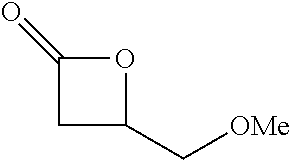
C00016

C00017
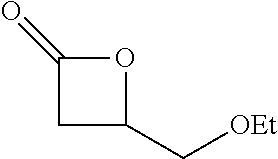
C00018

C00019

C00020

C00021

C00022
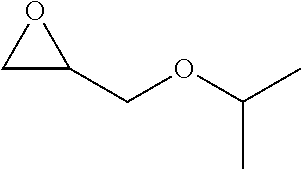
C00023

C00024

C00025

C00026

C00027

C00028
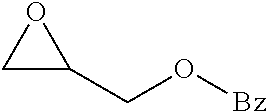
C00029

C00030

C00031
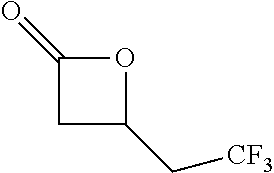
C00032

C00033

C00034

C00035

C00036

C00037

C00038

C00039

C00040

C00041

C00042

C00043

C00044

C00045

C00046

C00047

C00048

C00049

C00050

C00051

C00052

C00053

C00054

C00055

C00056

C00057

C00058

C00059

C00060

C00061

C00062

C00063

C00064
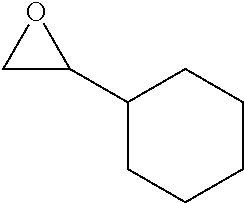
C00065

C00066

C00067

C00068

C00069

C00070

C00071

C00072

C00073

C00074

C00075

C00076

C00077

C00078

C00079

C00080

C00081

C00082

C00083

C00084

C00085

C00086

C00087

C00088

C00089

C00090

C00091

C00092

C00093

C00094

C00095

C00096

C00097

C00098

C00099

C00100

C00101
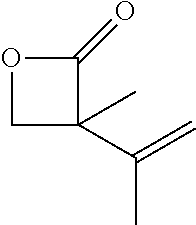
C00102

C00103

C00104
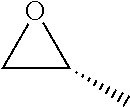
C00105

C00106

C00107

C00108

C00109

C00110

C00111

C00112

C00113

C00114

C00115
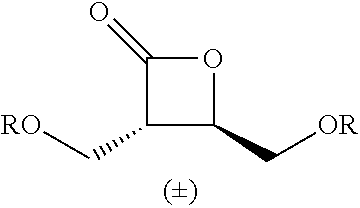
C00116

C00117

C00118

C00119

C00120

C00121

C00122

C00123

C00124

C00125

C00126
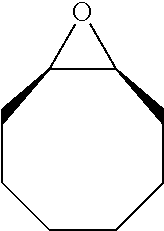
C00127

C00128
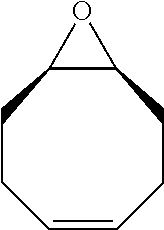
C00129

C00130

C00131

C00132

C00133

C00134
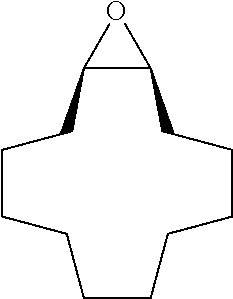
C00135

C00136

C00137

C00138

C00139

C00140

C00141

C00142

C00143

C00144

C00145

C00146

C00147

C00148

C00149

C00150

C00151

C00152

C00153
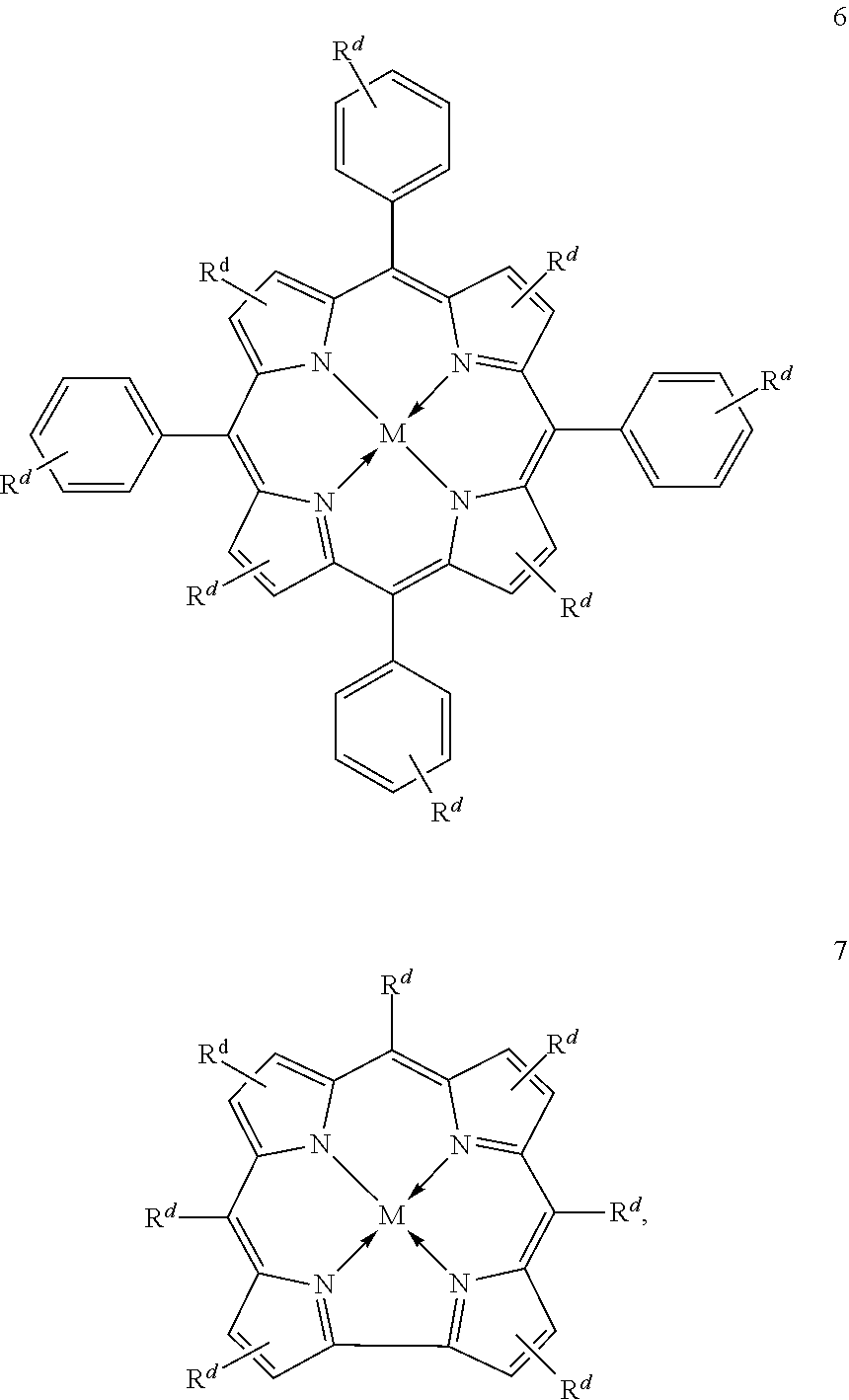
C00154

C00155

C00156
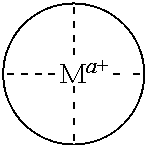
C00157

C00158

C00159

C00160

C00161

C00162

C00163

C00164

C00165

C00166

C00167

C00168

C00169

C00170

C00171

C00172

C00173

C00174

C00175

XML
uspto.report is an independent third-party trademark research tool that is not affiliated, endorsed, or sponsored by the United States Patent and Trademark Office (USPTO) or any other governmental organization. The information provided by uspto.report is based on publicly available data at the time of writing and is intended for informational purposes only.
While we strive to provide accurate and up-to-date information, we do not guarantee the accuracy, completeness, reliability, or suitability of the information displayed on this site. The use of this site is at your own risk. Any reliance you place on such information is therefore strictly at your own risk.
All official trademark data, including owner information, should be verified by visiting the official USPTO website at www.uspto.gov. This site is not intended to replace professional legal advice and should not be used as a substitute for consulting with a legal professional who is knowledgeable about trademark law.